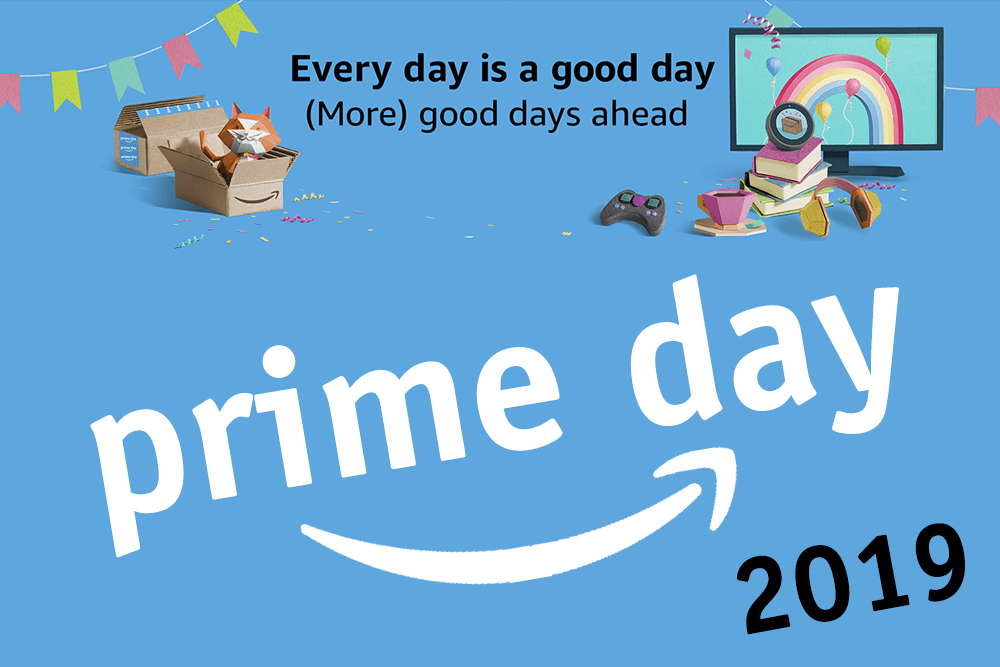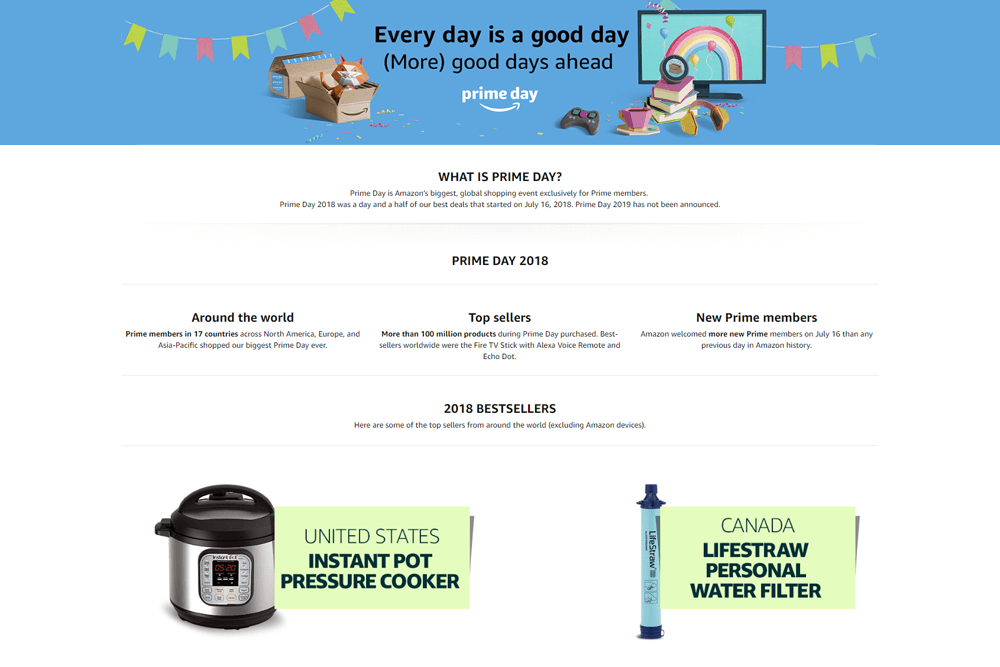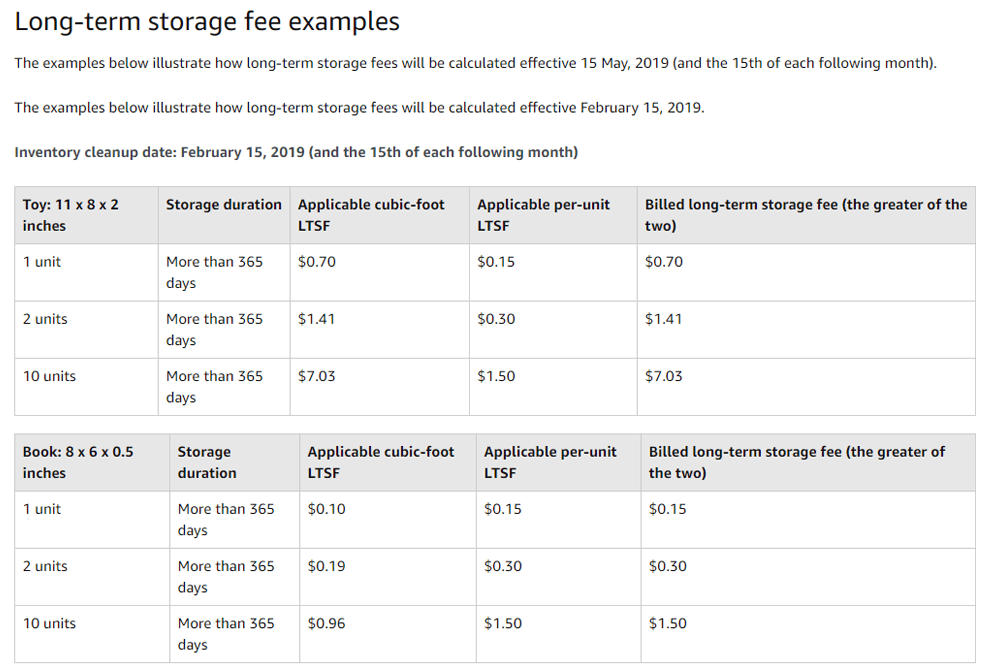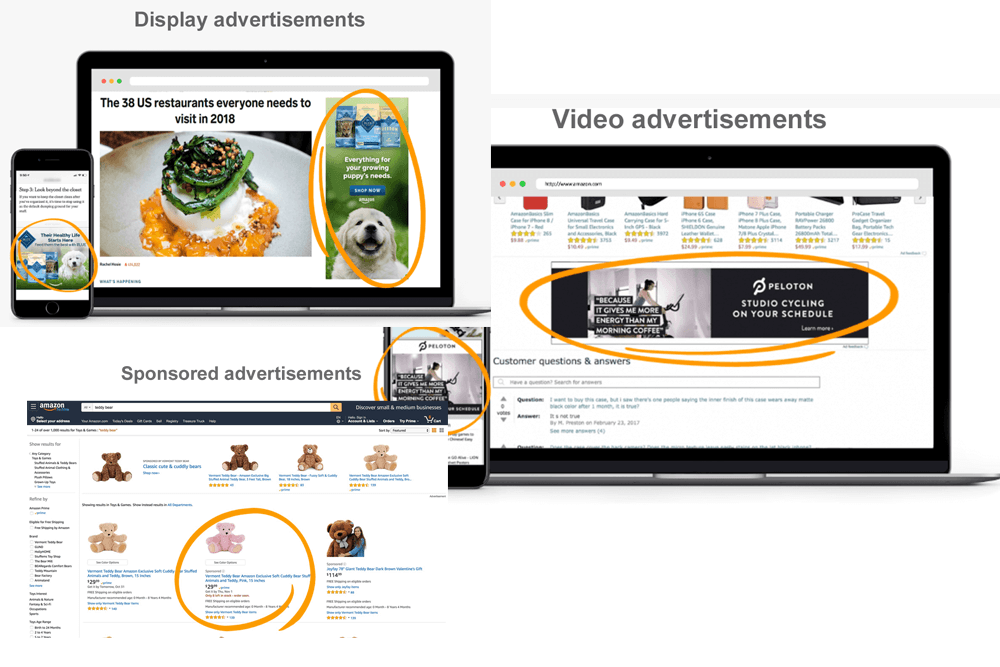
Amazon launched Prime Day as a celebration of the company’s 20th birthday on July 15, 2015. The sales event has grown every year since then, and last year’s Prime Day received a staggering 89 million visitors who purchased over 100 million products. While Amazon sellers are battling against all of the other retail and e-commerce giants on days like Black Friday and Christmas, Amazon stands alone on Prime Day. Last year’s Prime Day marked the biggest day of sales in the company’s history, and this year’s event is likely to challenge that milestone.
Amazon Prime Day Lasts Longer Than 24 Hours
The term “Prime Day” is a bit deceiving as the event was extended to a 36-hour period in 2018. Given the massive success of last year’s Prime Day, there is no reason to believe that the extension won’t remain this year, and some speculate that Amazon may even stretch Prime Day out to a full 48 hours.
Amazon prime day for 2019 will be on July 15, 2019. Last year’s date was pushed back so that Prime Day wouldn’t compete with the World Cup; with no major worldwide events in the way this year.

Looking beyond just the actual 24-48 hour time period that is officially “Amazon Prime Day”, there is also extra traffic to the website before and after Prime Day. Amazon shoppers are used to the company stretching big shopping days into longer periods, as it does when it offers lightning deals all week instead of just on the actual day of Black Friday. As soon as Prime Day is officially announced, expect plenty of shoppers to be on the lookout for great deals across the marketplace.
Stocking Up On Inventory and Other Prime Day Preparations
The last thing you want to do on Prime Day is run out of stock on a hot-selling product! With tens of millions of shoppers searching through every nook and cranny of the marketplace, your top-performing ASINs are very likely to see a spike in traffic, especially if you engage in successful advertising strategies like the one we will cover in the next section. In addition to an uptick in your regular sales numbers on Prime Day, you could also see the windfall of an improved Amazon bestseller rank, leading to even more sales in the days or weeks to follow.
Amazon is running a promotion from June 1, 2019, through January 31, 2020, that will lower Amazon storage fees from 50 to 75% on eligible items! Any standard-size Fulfillment Network SKU that sells 60 or more units in a month will be eligible for the discount, so stocking up on your best-selling items could come at a discount over the second half of 2019.

In general, you should plan your inventory in correlation with how aggressively you plan to advertise on Prime Day. If you are planning on making a substantial investment in your advertising budget to drive sales, you should also make a substantial increase in your inventory to get the most out of your advertising dollars. Conversely, if you don’t plan on getting too heavily invested in the bidding wars for keywords, you can expect a more modest bump in sales and in turn only need to slightly adjust your inventory.
Regardless of your advertising and inventory decisions, now is the time to take a good hard look at your product listings. Are there any improvements to be made in pricing or product page descriptions? Take some time in June to experiment a bit with your catalog to see if you can boost your conversion rates. Prime Day will bring a lot more eyeballs to your products, so make sure that they are priced and presented optimally so that you can turn those clicks into sales.
Advertising Products On and Before Prime Day
Prime Day is essentially like Christmas in July for Amazon sellers. And just like during the fourth quarter, an increase in traffic comes with an increase in sellers trying to fight for their share of the pie. Good placement across top keywords in every category will be heavily sought after during Prime Day, and sellers looking to get in the mix will need to be prepared to spend extra on advertising.
Setting an Advertising Budget
Sellers should expect anywhere from a 50-100% increase in the price that impressions will cost to acquire on Prime Day. For example, if you have a campaign that has been enjoying success at roughly $1.00 per click, this bid may need to be bumped up into the $1.50 – $2.00 range on Prime Day to stay ahead of the curve.
With this in mind, set a budget for yourself and create a plan well in advance of Prime Day. You don’t want to be caught flat-footed or running out of funds on the big day because you didn’t plan accordingly. On the flip side, you also don’t want to get caught up in the frenzy and spend more than you originally intended to on campaigns that may not perform up to your expectations.
If you decide to take an aggressive approach to advertising, consider turning on “Dynamic Bids – Up and Down”. “Dynamic Bids – Down Only” is a popular option on Amazon due to its ability to lower your bid price and still be effective within a campaign, unlike fixed bids that stay where they are even if a lower bid would do the trick. Dynamic Bids – Up and Down might be too volatile for some sellers to have on year-round, but on a day like Prime Day, it could be helpful in making sure that your bids are always accurately priced.
Only you can determine the right budget and advertising strategy for your company. The important thing is to take this month before Prime Day to study your numbers and performance metrics, fine-tune your ad copy and have a game plan.

Target Top Converting Keywords
Some sellers are tempted to spend advertising dollars on their weaker ASINs to use the traffic of Prime Day as an opportunity to get rid of some of their stale inventory. While it is certainly not a bad idea to lower the prices on products like this to help them move organically, advertising dollars are much better spent on your top converting products.
Clicks received through advertisements are going to be pricey on Prime Day, so you want to make sure that you are getting the best return on investment that you possibly can on these clicks. This means turning those clicks into purchases and making those purchases be the best representation of your brand that they can be.
After all, the ROI on these ad campaigns will reach out far beyond just the items purchased. These purchases can lead to long-term supporters of your brand, positive reviews, improved sales rankings, and other products in your inventory being purchased through the “halo effect”.
Advertising Off of Amazon
Beyond just advertising on Amazon, sellers should take advantage of other platforms at their disposal. Brands can use their social media presence to drum up excitement for Prime Day, getting people talking about what they will be looking for on Amazon and perhaps offering a coupon or teasing some of the Prime Day exclusive prices customers can expect on their products.
This is also an excellent time to use FeedbackWhiz’s customer data to your advantage. FeedbackWhiz users can use the valuable data collected on their buyers to create an effective Facebook ad campaign targeted around custom demographics and lookalike audiences. These campaigns can drive new and returning customers to your products and may be more cost-effective than the highly competitive landscape that Prime Day will produce on Amazon.
Prime Day Promotion Options
One of the signature promotions that run during Prime Day and other big sales on Amazon are Lightning Deals. Unfortunately, the deadline to sign up for a Prime Day Lightning Deal has already passed as it was set for May 10, 2019. Sellers interested in submitting their products to be considered as Lightning Deals next year should start looking for submission details as early as April.
The Deal of the Day is another popular promotion on Amazon, but that one is limited only to vendors. For many sellers, the best promotion at your disposal on Prime Day will be coupons.
Coupon savings stick out nicely in search results on Amazon. They also give customers the satisfaction of clicking “clip coupon” and seeing the price on their purchase go down. Consider trying out some new coupons in June to see what effect they have on your sales numbers. You can start up your Amazon coupons campaign here.
What You Should Be Doing On Prime Day
After putting all of this time and energy into making sure everything is ready for Prime Day, you should make sure to keep your efforts going on the actual day (or two) of the event. Account monitoring is always an important part of every seller’s business strategy, but it is particularly important on a day like Prime Day where any small mistake can be magnified.
First and foremost, stay on top of your advertising campaigns. Even the best thought out plans and projections are bound to be hit with a couple of surprises when the action gets underway. By being aware of how specific campaigns are over-performing or under-performing, you can adjust bid sizes and allocation amounts on the fly to get the most out of your budget.
The same logic goes towards pricing and inventory. Depending on your industry and pricing strategies, products that are moving too quickly may need to be repriced higher and products that are failing to convert may need to be repriced lower. If you run low or out of inventory on a specific SKU, make sure to be on top of replenishment and to re-allocate advertising towards other products.
Your preparation is likely to pay off and keep Prime Day from feeling too overwhelming. Still, keeping a close eye on things will only make them go even smoother.
What You Should Do After Prime Day
After the dust has settled, remember to make the necessary adjustments to your advertising and promotional campaigns. You don’t necessarily want to drop your advertising budget immediately back down to its normal rate as you may still want to compete in top keywords throughout the week, but you can certainly start dialing things back and perhaps remove dynamic pricing if you set that up for the big day.
The aftermath of Prime Day is where FeedbackWhiz will truly shine. Prime Day only lasts for a day or two; year-round success comes from building up your brand through campaigns designed to convert sales into product reviews. Those product reviews will lead to higher search rankings, more sales, and even more opportunities to repeat the process.
Don’t let all of the brand new customers you pick up during Prime Day slip away. If you’ve been waiting for the right time to give FeedbackWhiz a try, there is no better time to get things set up than before Prime Day. You can start earning more product reviews right away and start collecting valuable consumer data that will come in handy when the fourth quarter rolls around.
We hope that you can use this primer to help get you and your brand ready for Prime Day. Good luck!

0 Comments